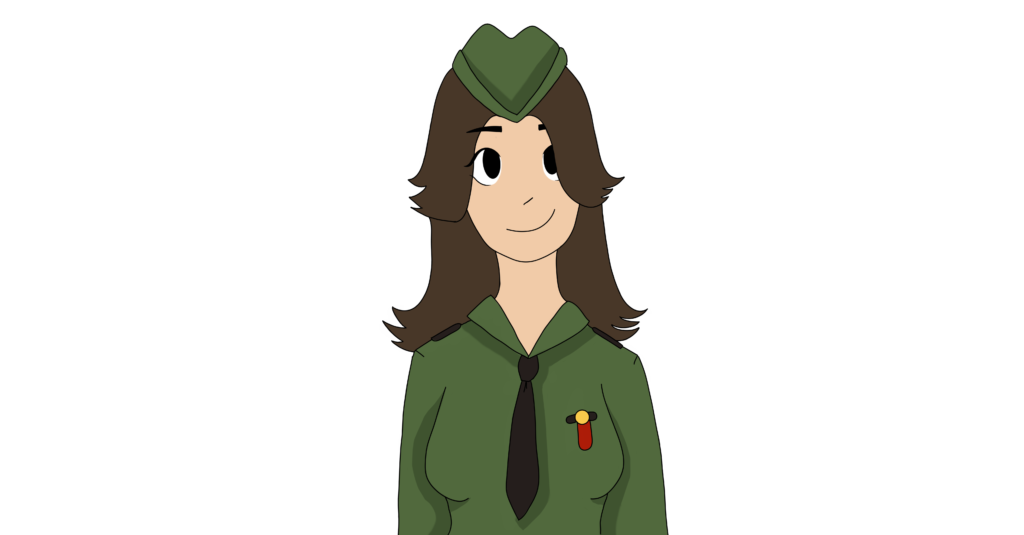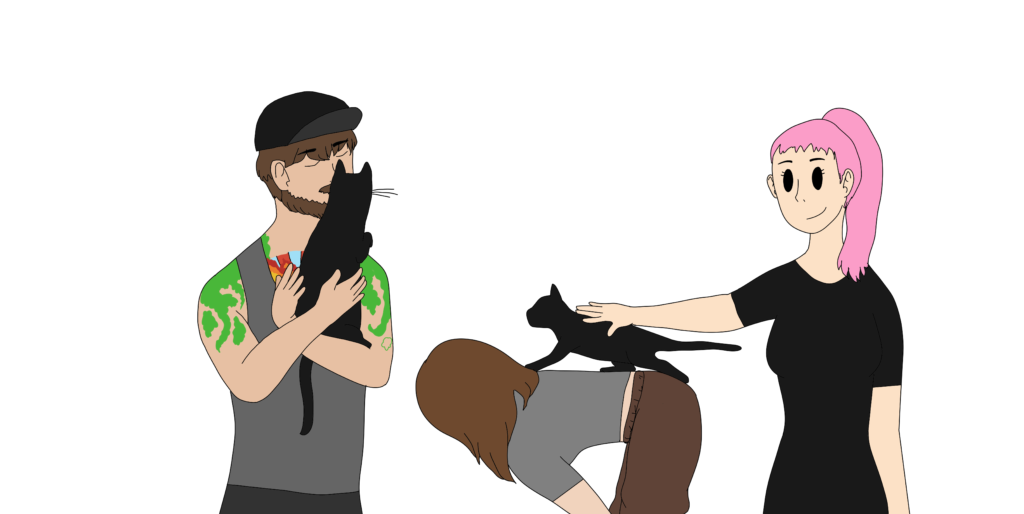Children Are Soldiers… How I’ve Disciplined A 14-Year-Old Girl
{10min read}
Where to start!
Back in 2009 I met my partner.
We had a fairly short relationship,
which lasted 6 months to a year.
Back then, her daughter was a year and a half old.
Cut forward to 2021,
I had been working in a local high school as an emotional support officer for children in care. The job was amazing. Armed with a list of students to talk with or support in class I would wander from room to room, focusing the angry and broken children and getting results!
My favourites were the most disconnected, disengaged, hurting and closed off. With genuine interest and care I would see these people begin to learn to trust again, and from there… improve their focus and sometimes even their grades!
The job didn’t come without it’s share of difficult situations.
One I remember clearly was a quirky trans student.
They had become interested in polyamory (multiple partners) and were reading a book about it when we met with another staff member…
Suddenly the relationship was up in the air as the tension flooded the room, sending all good feelings and thoughts fleeing…During the explanation of the book this staff member said MULTIPLE times that “polyamory isn’t normal” … A hot button for this young student.
I watched this adult transform from support and a safe space to the target of all inner rage in one instant! (but… more on that another time!)
When I first met my daughter I got the exact same vibes.
They felt like the same person.
Short hair,
Masculine names,
Binders,
Jeans and flannos…
Boots.
Working with children we learn quickly that there’s one thing they want above all, attention.
Be it reactions, interactions, help, support, encouragement, being yelled at… Children crave attention. People in general crave attention, and I believe we all crescendo our needs, wants and expectations.
The first time something is said it may be a hint or a whisper.
The next is a soft mumble,
Then soft words.
Then words…
Moving in to louder words,
before the raised voices start…
Next thing we know someone is yelling…
Children are no different. A lot of these choices were visual opportunities for connection (or attention).
When I was first around our daughter she would be “speaking on the phone” to friends, digging and saying thing to test what I would do… But I gave no reaction.
Then it got to inappropriate games and clips… So I made mental notes.
Next were tricky conversations … So I asked a lot of questions.
Now the attitude could finally begin… So I sat back, talked with my partner a lot, and came up with the first plan.
GETTING YOUR HANDS DIRTY.
When first observing teenage behaviour I look for the consistencies, asking questions to myself like:
What is happening every day?
Where are the patterns?
What phrases repeat?
Is it tone, delivery or content that this person uses to stress importance?
Where are some of these behaviours probably coming from?
What influencers are influencing this person?
Who is feeding these choices?
Where is it being enabled?
Where do these life choices possibly lead long term?
Is this a phase?
Where could I be wrong?
What can I actually do with all of this?
Caring for someone while watching them decide to hurt themselves is tough.
It doesn’t feel good.
Sometimes it can feel like there is no way to help them.
As the old saying goes
“You can lead a horse to water, but you can’t make it drink.”
Besides, we could be wrong and it isn’t our life.
Here was the first strategy:
TALK (but really be listening and questioning)
OBSERVE (time)
FIND PATTERNS
SEE INFLUENCERS
BOUNDARIES (limit influencers)
RESPONSIBILITY
MOVE BOUNDARIES
Phase 1. TALK
This one is no surprise: As children grow, they change.
Children are just little people. Sure they have limited knowledge and experiences, but so do a lot of older people. The only way to get to know someone is by spending time with them.
This is phase one. Find ALL of the time we can, and be around our disengaged children.
With our daughter I would be half busy in the house, but would be ready to drop anything at the beginning. Time spent was SPENT on and for our daughter.
If we were doing something that bored her, we would change to another activity.
When talking I would be actively trying to ask open questions and attempting to remember as much as possible. Reflecting back and analysing the things being said (and HOW they were said). Learning the difference between a true personal thought from my daughter, and a rehashed spewed up 50th hand idea from the zeitgeist. Knowing some of the themes flying around in the high school I was able to cut through a lot, and begin to observe the true person emerging (or trapped if you will) underneath it all.
Phase 2. OBSERVE
The more we would spend time together, the more I could see the genuine thoughts. The topics that were avoided because they hurt. A lot of the pain hidden behind awkward smiles and repeated jokes.
Spending time taking in what another person is expressing creates deep, real and lasting communication. When it comes to the capricious teenager, this open honest communication will help a lot of the coming changes and “typical teenage tantrums.”
Better yet, by observing these things (with a good bit of fear and apprehension!) I was able to focus on our daughter, not my own thoughts, feelings and expectations. This was a time to let her be her, to show me who she is at the moment, and to look out for the red flags.
Phase 3. FIND PATTERNS
And Red flags there were…
Fairly quickly I began magically losing things, mostly money or sherbet.
Then there was more attitude and rudeness when I hadn’t been there for a few days.
Constant half truths, straight up lies and manipulation.
Some of those jokes ramped up as the events attached to them came around.
The jokes stopped being such a mask to hide behind, and the emotion was becoming more obvious.
The people in her life were adding to the fears and issues.
With the influences more narrowed in it was time to make some changes.
Phase 4. SEE INFLUENCERS
No boundaries,
Unlimited tech,
Screens in rooms,
Social media, tick tok and unrestricted netflix,
People’s attitudes and behaviours…
All of these things were piling together, and shaping this girl’s life.
The track that she has decided for her life literally included becoming a stripper.
She was anxious and negative.
Doing everything she could try feel valid and acceptable.
Dressing to impress, piling on makeup.
Using people as an emotional energy supply.
But none of it helped her much, she ended up in a very dark and bad place…
Something had to be done, NOW.
Phase 5. BOUNDARIES
Tech boundaries,
No screens in room,
Netflix age restricted,
Socials and entertainment limited.
We came out swinging.
First was tiktok.
As we had spent so much time talking I was able to explain the influence, and how some of those things were beginning to control how she thought and looked at the world.
Her mother had also decided that as it was a tough couple of years, that this year any boundaries could take a break. The thinking was that it would help our daughter heal.
Unfortunately, no boundaries just meant no self control and no respect.
Some of the boundaries were accepted well,
Others, mostly food and just parking in the lounge-room watching tv as if no one else existed, were more difficult…
So, we had to move the positive thinking internal.
It was time for some responsibility.
Phase 6. RESPONSIBILITY
One of the biggest things that separates the go-getters from the average is responsibility.
Most elite soldiers, fighters, business people, leaders…really just competent people in general seem to all say the same thing.
Take ownership of the problems, accept the blame when things go wrong, pass on the praise when things go well.
By accepting that we are responsible, to some level, for every single issue that happens around us we are able to take control of our own lives. Suddenly we aren’t just floating on the wind, we are making decisions and making the things in our lives happen. Positive and negative.
Children can learn these lessons in a million ways, having a teenager here’s what we did.
Morning routine, afternoon routine, food schedule.
The morning routine was simple and obvious:
Clean your room and make your bed.
Eat.
Get changed.
Feed the cats (mon – fri)
Get ready for the day.
Afternoon was similar:
Say hi.
Bag, tech down, get changed.
Talk with one of us.
Eat.
Homework / review.
Entertain yourself or create something.
The food schedule was done each night, because there were issues around eating.
Now, from the beginning and consistently the idea has been this.
You prove that you can live within these boundaries, and then the boundaries open up.
If things don’t go well, the boundaries come in (and any areas we have handed over that are struggling come back under our responsibility).
Phase 7. MOVE BOUNDARIES
By moving the boundaries as the responsibilities were accepted our daughter has shown massive growth. It has taken some time, and there are still things we are all working on, but having some responsibility has set our daughter up to make great choices. Where she would get rude and argue, she is able to control herself and then come back and talk about what happened.
When she would have just taken things she would slow down and ask.
The attitude melted away, because now she could see directly how those choices effected her.
As part of our daughter’s issue was a need for control, and to know everything that is happening all of the time, the boundaries have calmed a lot down. When someone would leave she would ask a million questions, when something was half explained she would have mini freak outs, when there were noises she needed to know RIGHT NOW what they were…
This was all learnt behaviour, and at times continues to flare up. When this happens we just give her more or less information, to test and stretch her in this area.
The boundaries move in and out,
as long as there is consistency,
change just keeps coming.
Moving house recently has tested this. With all of the excuses the follow through has dipped, and suddenly that attitude and disdain are coming back in…
By continuing to show that the adults will be consistent, children know where they stand, then they can feel safe and thrive.
And there You have it.
It’s that simple.
Again, here was the first strategy:
TALK
OBSERVE
FIND PATTERNS
SEE INFLUENCERS
BOUNDARIES
RESPONSIBILITY
MOVE BOUNDARIES
What kinds of discipline have You used with the Children in Your life?
Let Us know in the comment below!





